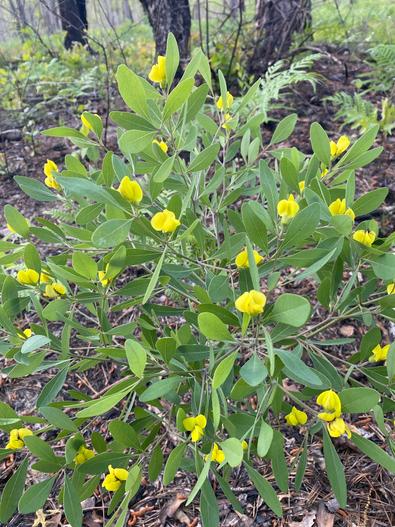Gopherweed
(Baptisia lanceolata)
Gopherweed (Baptisia lanceolata)
/
/

Hayes Valentine
CC BY 4.0
Image By:
Hayes Valentine
Recorded By:
Copyright:
CC BY 4.0
Copyright Notice:
Photo by: Hayes Valentine | License Type: CC BY 4.0 | License URL: https://creativecommons.org/licenses/by/4.0 | Uploader: Loopy30 | Publisher: Wikipedia Commons



































Estimated Native Range
Summary
Baptisia lanceolata, commonly known as Gopherweed, is a deciduous perennial herb native to the pine flatwoods, coastal plains, and open woodlands of the Southeastern United States. It typically grows to a height and width of 1-3 feet (0.3-0.9 meters), featuring upright stems and elongated, lance-shaped leaves. The plant produces bright yellow, pea-like flowers in the spring, which are moderately showy and attract pollinators. After flowering, it forms small, inflated seed pods that add interest to the garden.
Gopherweed is valued for its drought tolerance and adaptability to various soil conditions, making it a low-maintenance choice for native plant gardens, restoration projects, and naturalized areas. It is also used in border plantings and as a ground cover due to its spreading habit. This species thrives in full sun but can tolerate partial shade and is best suited to well-drained soils. While generally pest and disease-free, it can suffer from root rot in poorly drained soils. Gopherweed is not known for aggressive roots or significant invasiveness, but it should be monitored to prevent unwanted spread in garden settings.CC BY-SA 4.0
Gopherweed is valued for its drought tolerance and adaptability to various soil conditions, making it a low-maintenance choice for native plant gardens, restoration projects, and naturalized areas. It is also used in border plantings and as a ground cover due to its spreading habit. This species thrives in full sun but can tolerate partial shade and is best suited to well-drained soils. While generally pest and disease-free, it can suffer from root rot in poorly drained soils. Gopherweed is not known for aggressive roots or significant invasiveness, but it should be monitored to prevent unwanted spread in garden settings.CC BY-SA 4.0
Plant Description
- Plant Type: Herb
- Height: 1-3 feet
- Width: 1-3 feet
- Growth Rate: Moderate
- Flower Color: Yellow
- Flowering Season: Spring
- Leaf Retention: Deciduous
Growth Requirements
- Sun: Full Sun
- Water: Medium
- Drainage: Medium, Fast
Common Uses
Bee Garden, Bird Garden, Deer Resistant, Drought Tolerant, Low Maintenance, Rabbit Resistant, Showy Flowers
Natural Habitat
Pine flatwoods, coastal plains, and open woodlands of the Southeastern United States
Other Names
Common Names:
Scientific Names: , Baptisia lanceolata, Sophora lanceolata,
GBIF Accepted Name: Baptisia lanceolata (Walter) Elliott